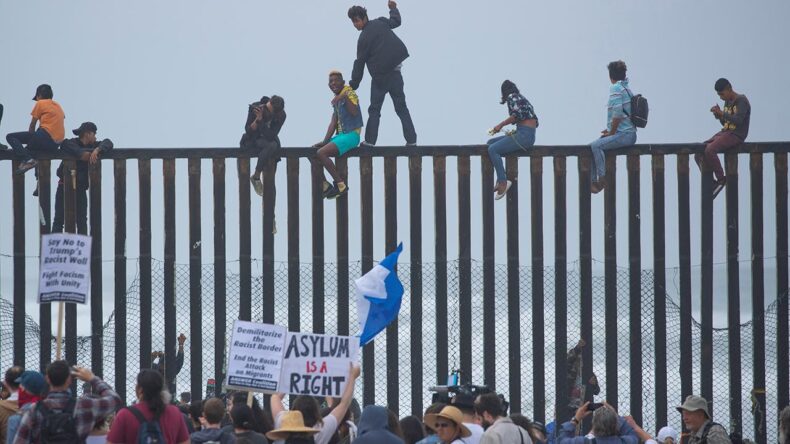A migrant was found dead at the border between the U.S. and Canada. After this incident, the demands for ending the asylum pact between the U.S. and Canada have reverberated. The Safe Third Country Treaty (STCA) signed in 2004 granted refugees the right to seek asylum in the first safe country they arrived in.
On Tuesday, dozens of protestors assembled in front of Toronto’s Canadian Public Safety Minister’s office. They demanded to end the asylum treaty between Canada and the United States. The demands came right after eight people drowned and died. The deceased people were trying to cross into the country.

Two deaths have been reported in less than two weeks after the Safe Third Country Agreement pact was amended. This STCA granted refugees asylum in the first safe country they arrived in.
Petition filed by protestors to end the STCA treaty.
The protestors filed a petition with Public Safety Minister Macro Mendicino. This ministry is responsible for border patrolling and policing in Canada.
The executive director of the Migrant Workers Alliance, Syed Hasan, has confirmed that there were thousands of signatures signed. They call for the end of the STCA pact and demand permanent resident status for all migrants.
This group was previously known for organising protests as well.

Hasan added that the deaths are continuously being reported, and this denial and demand for permanent residentship have become a death sentence in this country.
STCA was aimed at maintaining the flow and influx of refugees.
STCA came into effect in 2004. The STCA pact aimed to control the migration of asylum seekers. The original agreement was intended to turn back attempts at the formal border crossing by asylum seekers from the United States into Canada or vice versa. They are advised to apply for asylum and seek refuge in their first ‘safe’ country.
The intention was to maintain the flow of refugee claimants at the shared land border. The Canadian side has earlier challenged the lack of safety laws and demanded laws to protect refugees in the U.S.

However, the influx of refugees continued. They started entering Canada through irregular crossings. The flux further pressured Justin Trudeau to amend the agreement, which covered the entire length of the U.S.-Canada border.
Several critics have confirmed that there have been cases of families being separated because of this policy, which has forced immigrants to choose deadly informal routes to cross the borders. Critics explained it by questioning the condition of two families who were trying to enter the United States’ borders from Canada by boat.
Last week only, The St. Lawrence River near Akwesasne, Quebec, witnessed the deaths of eight people.
Critics question the legality of STCA.
The governments of both nations have put their faith in the agreement and believe that this pact is one of the best measures to manage and maintain the world’s longest land border.
However, the lawyers working with refugees shared a different belief.
There have been challenges by human rights organisations and legal proceedings challenging the U.S. claim as a third safe country for refugees seeking asylum. This suit gathered widespread support from prominent figures like Judge Michael Phelan of the Federal Court of Canada and others. The office of the United Nations High Commissioner has issued cautions about interpreting safe third-country agreements, despite this, they do agree with specific circumstances.
This ambiguity has led to legal proceedings by some Canadian lawyers to question the legality of the STCA.

The lawyer at the South Asian Legal Clinic of Ontario for undocumented refugees, Shalili Konanur, has explained how they were aware from the beginning of the repercussions of the pact. The pact ought to have made the border more challenging to cross; despite this, there are possibilities of people choosing to cross it and being forced to own dangerous routes.
He questioned the reasons behind still holding onto this treaty and strengthening it. He adds that there is enough evidence to present eight dead people, and he is firm on taking a stand even in the future and believes that this is not one of the last steps he is taking.












